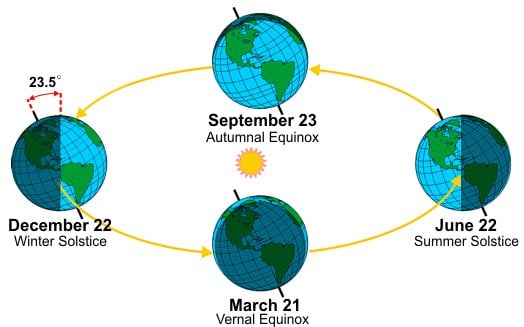Saturn couldn't be more different from Earth; it's mostly made of hydrogen and helium and has nearly 100 times more mass. And those rings...
You can also check out these cool telescopes that will help you see the beauty of planet Saturn.
But Saturn's axis is tilted, just like Earth. While Earth's axis is tilted at an angle of 23.4°, Saturn's tilt is 26.7°. That's pretty close.
And just like Earth, Saturn's axial tilt gives the planet seasons. In fact, we can see Saturn's tilt by the position of the rings. When Saturn's northern hemisphere is experiencing summer, we can see the rings at their widest point. And then, as Saturn works its way through its 30-year orbit around the Sun, the angle to the rings decreases until they're almost invisible - just a line through the planet.
The changing seasons on Saturn also affect the planet's weather patterns. NASA's Voyager spacecraft originally clocked wind speeds near Saturn's equator at nearly 1,500 km/h. But when Cassini showed up 15 years later, they'd slowed down to only 1,100 km/h.
Here's an article from Universe Today about
long term changes on Saturn
, and
three views of Saturn
over a long period of time.
Here's a
nice photograph
from Astronomy Picture of the Day of Saturn, and another captured by Cassini, showing the planet's southern hemisphere
being illuminated
.
We have recorded two episodes of Astronomy Cast just about Saturn. The first is
Episode 59: Saturn
, and the second is
Episode 61: Saturn's Moons
.
 Universe Today
Universe Today
